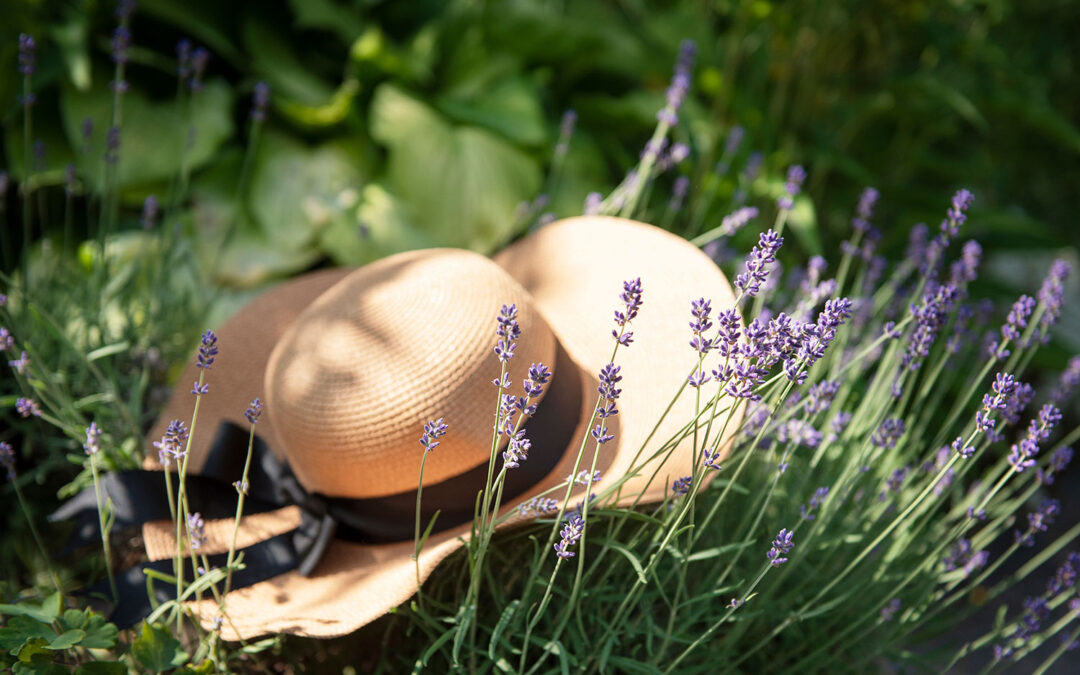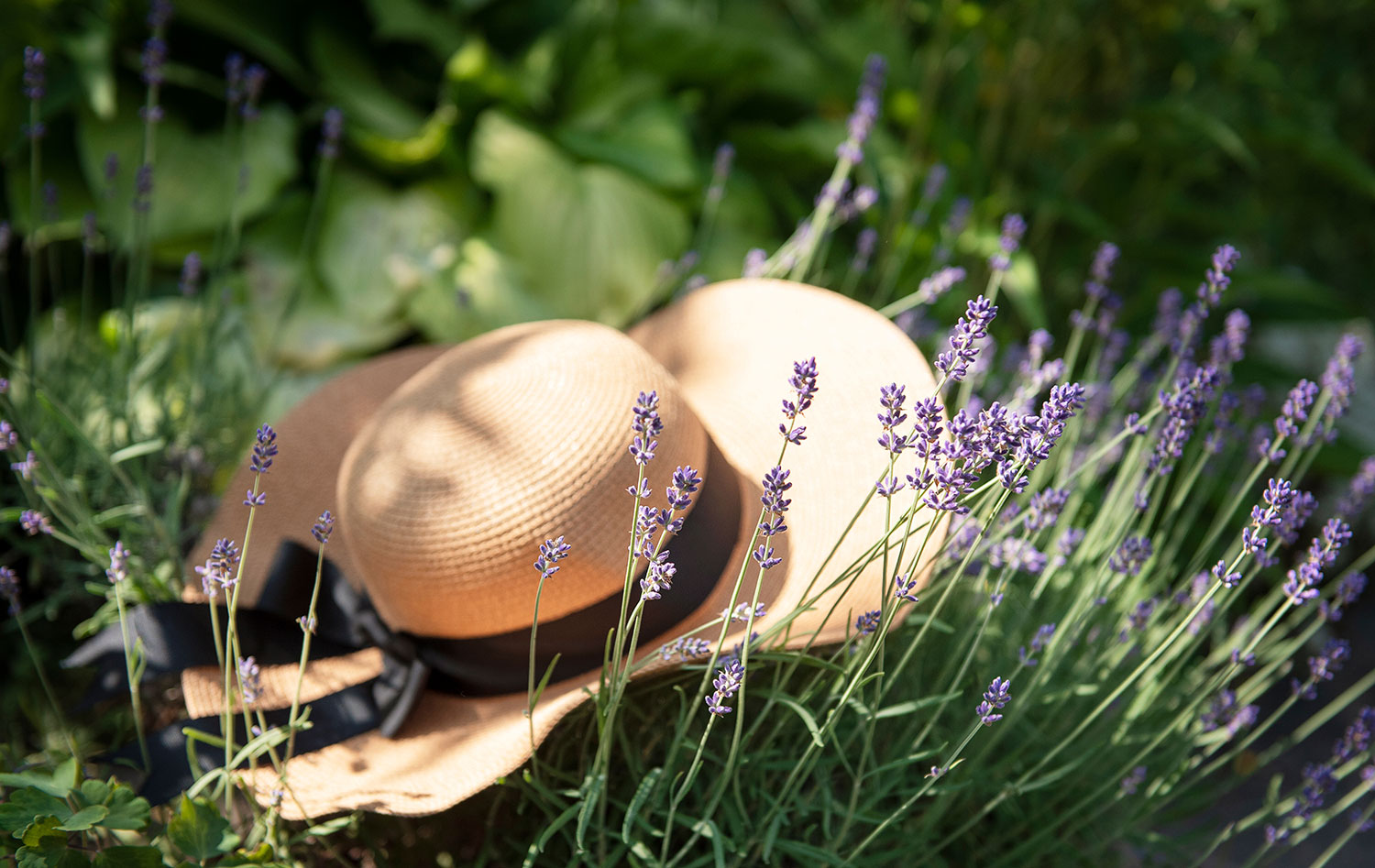It’s a fact: Life is lovelier with Lavender. It enhances our food with aromatic flavor, gives the air a sweet summertime scent, and feeds our favorite pollinators! But now’s the time for you to give back to your Lavender plant with a bit of TLC. Why, when, and how should you prune your Lavender?
The “Why”
Lavender is affectionately known as a “sub-shrub” or “semi-shrub.” Why? It can’t decide whether it’s a flexible herb or a woody bush. You’ve probably already noticed your plant’s anatomy: old growth becomes hard and barky, while new growth is soft and supple. If you fail to prune your plant’s new growth, more and more of your plant will become woody.
You might be wondering: What’s the big deal about that? Woody portions of your Lavender plant are much more brittle, susceptible to frost, prone to rot and disease. Plus, they produce fewer leaves and flowers, making for an aesthetically “bald” Lavender plant. Not so great, right?
The “When”
For the most devoted Lavender parents, it’s recommended that you prune your plant in the Early Spring and Late Summer.
A Spring pruning consists mainly of “clean-up” from damage your plant experienced over the winter months. It’s worth noting: this early pruning can result in delayed flowering.
The Late Summer pruning is the most thorough! Wait until your Lavender plant has finished its flowering cycle. If you live in an area that experiences early frosts, put your pruning on the priority list for August. Waiting can result in frost damage. If you’re in a warmer climate, you can prune as late as early September.
The “How to”
The extent of your pruning project will depend on your variety of Lavender and its age. Extensive pruning is reserved for established plants that are at least 2 years old. Youngsters benefit from regular “pinching.”
The Basics of Lavender Pruning
Pinching Young Lavender Plants
When your little Lavender develops new tips, pinch them off. Why? This will encourage your plant to create more branches, making it bushier over time. Early pinching also gives you some control over your Lavender’s shape and size; waiting to shape your plant until it’s woody is a big mistake!
Pruning Established Plants
So, this is going to sound like a lot. Are you ready? You will prune off ⅓ of your Lavender. Bad at math? Thankfully, these herbs are pretty forgiving. If you’re off by a little bit, you can still expect your plant to bounce back. However, pruning ½ your plant or more usually puts you in the danger zone!
- Get your clean pruning shears ready!
- Take a few steps back, eyeballing your plant.
- Cut a ⅓ of a stem.
- If you’re a nervous first-timer, you can use your first cut stem as a “measuring stick,” cutting other stems to the same length.
- Have fun with it: this is your chance to shape your Lavender plant!
Just a reminder: You should prune your Lavender (at least) 2-3 inches above the woody stem. Why? Pruned wooden branches will not produce new growth. You’ll just be stuck with an ugly twig. (Don’t say we didn’t warn you!)
Pruning Old Lavender Plants
Are you trying to get your Grandma or Grandpa Lavender to look healthy and lush again? You should continue pruning your plants, even when they become “extra established” (aka old). To encourage new growth and minimize their woodiness, stretch your normal pruning limits. Prune branches 2 inches above the woody sections. Doing so will give your plant its best chance to make new, healthy growth. And, remember, we’re here for you when you’re ready for your next generation of Lavender.
Pruning Reminders for Specific Species
Not all Lavender is the same: some are hardier than others, and some have different growth habits! So here’s a look at some of the specific Lavender varieties we offer:
Lavender ‘Hidcote’ & ‘Munstead’ & ‘Rosea Jean Davis’
These three are all English Lavender varieties, with a compact, low-profile growing habit. The ‘Rosea Jean Davis’ gets a special mention: It sports pretty pink flowers! Expect blooms in the late Spring or early Summer. Once the flowers are exhausted, dead-heading will encourage your plant to bloom again! Wait until late August for extensive pruning.
Lavender ‘Grosso’ & ‘Provence’
What do you get when you combine English Lavender with Spike Lavender? You guessed it: these two varieties! They have longer branches, flower stems, and flower spikes that grow from the plant’s center. Lavender ‘Grosso’ and ‘Provence’ have a long blooming period, through early-late Summer. Once it’s over, get ready for your August pruning! Since these plants have such long stems, you can chop as much as ½ of your plant!
Lavender ‘Goodwin Creek Grey’
While most Lavender is renowned for its beautiful blooms, this one is known for its attractive, silver-grey foliage! Its flower spikes are shorter and smaller than other varieties. Still, they are a unique deep blue-violet color, giving this plant an unexpected pop. As a hybrid, it was bred to withstand higher heat and humidity, making it a hardy variety. Follow the pruning instructions in the “How to” section to maintain your plant’s size!
Lavender ‘Phenomenal’
This is the lovechild of English and Portuguese Lavender: giving it excellent cold tolerance and a remarkably long blooming time! Blossoms begin around June and last until Fall. If you live in an extra chilly climate, you should do your “major” pruning in the early spring before flowering begins. Why? Your plant will enter winter in ‘one piece,’ without any vulnerable wounds. Extra perks? Since this variety is a late bloomer, Spring pruning won’t interfere with your flowering season. You will also get to enjoy those blossoms as long as possible!
Lavender ‘French’ & Lavender ‘Silver Anouk’
Expect early spring blooms, with a compact shape, crowned with fully open blossoms. French Lavenders and Spanish Lavenders are the least hearty of the bunch, so treat them tenderly! Deadhead after its first flowering: taking care not to trim too close to the plant’s base. Hopefully, it will reward you with a second round of blooms.



are all your lavenders edible? aren’t some lavenders for scent but not edible? and I have a new lavender plant that I do not see here listed, would you be able to identify it for me anyway in case I want more or to learn about its cure? and what is the most hardy for winter in Maine?